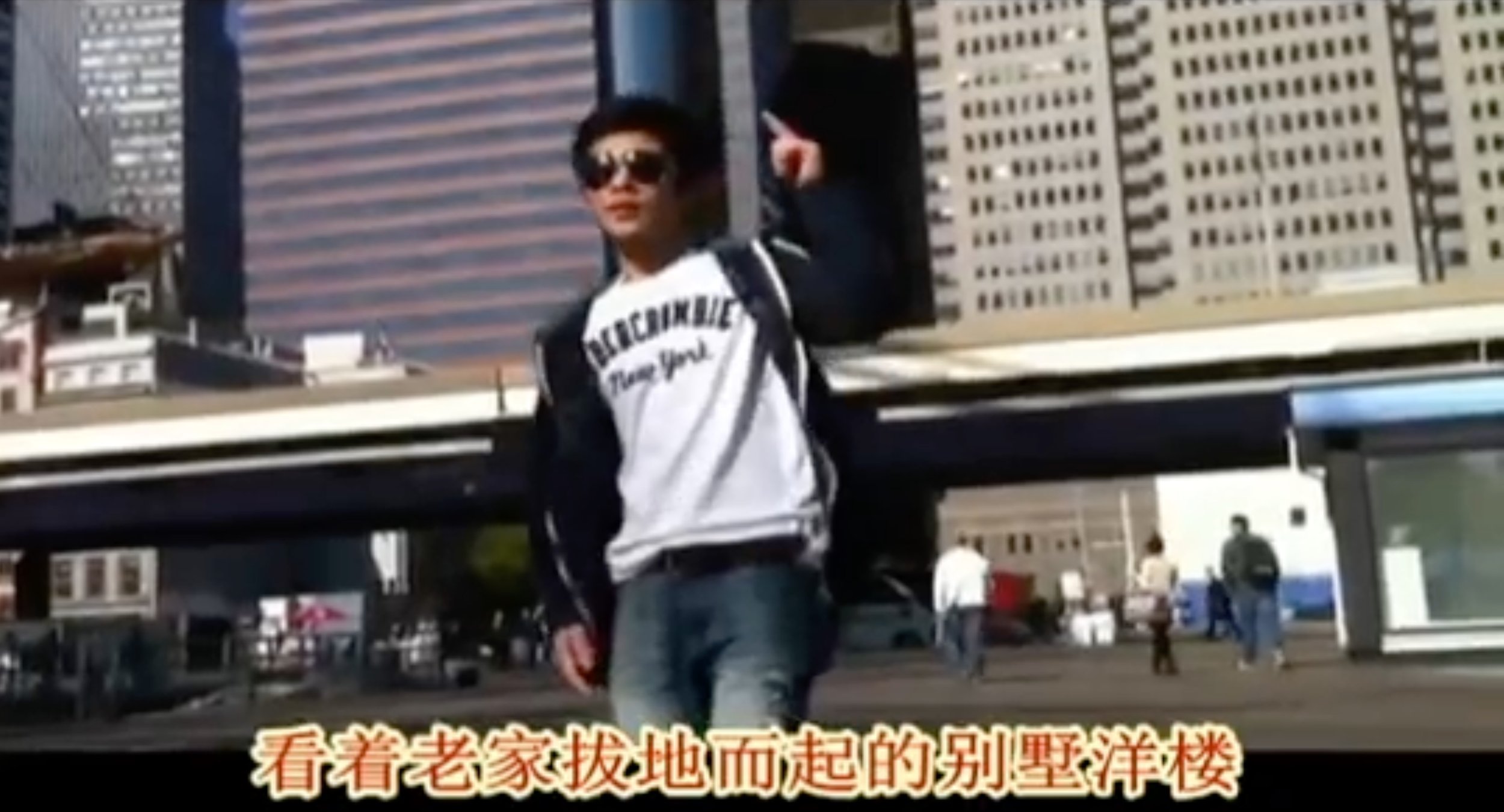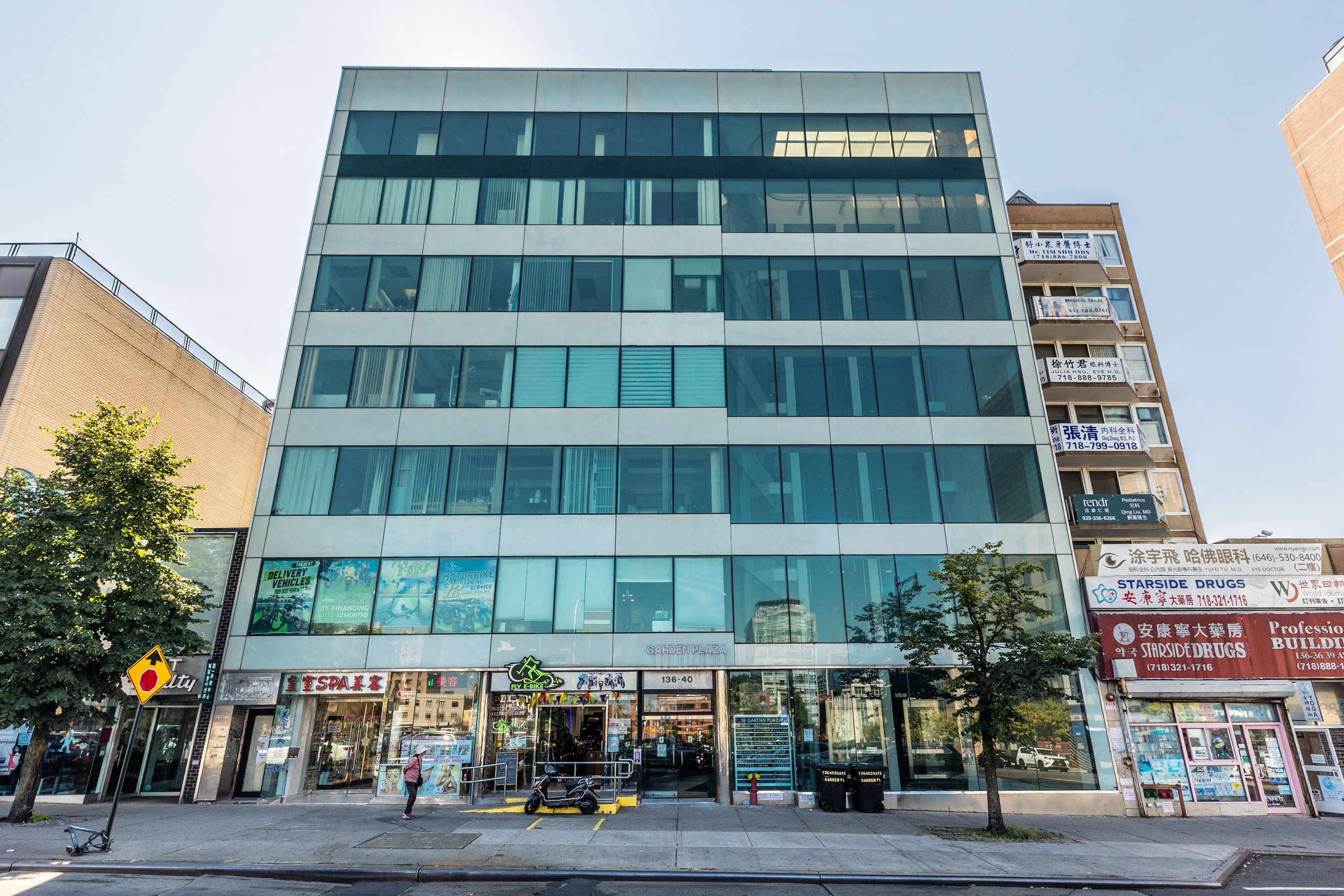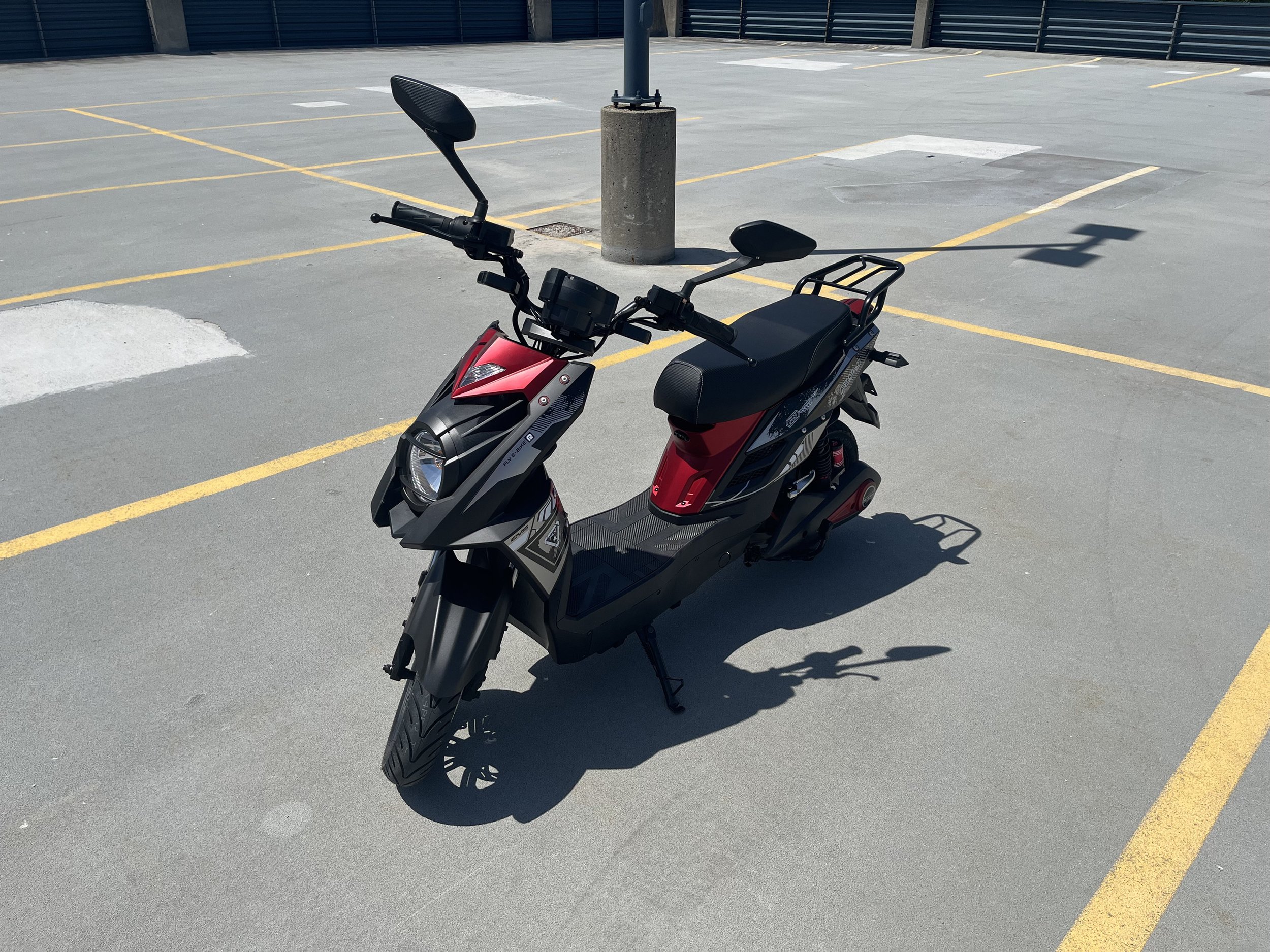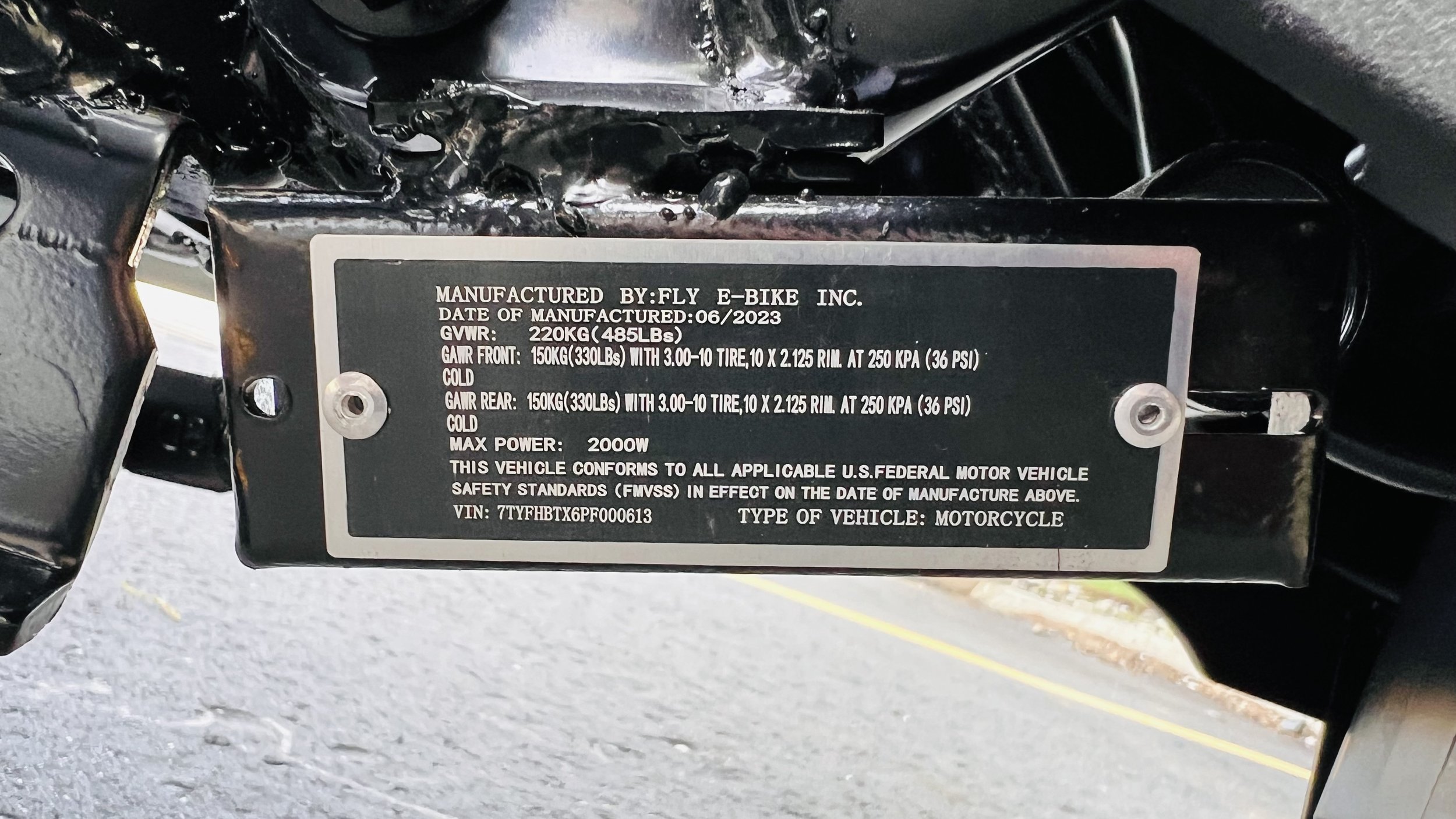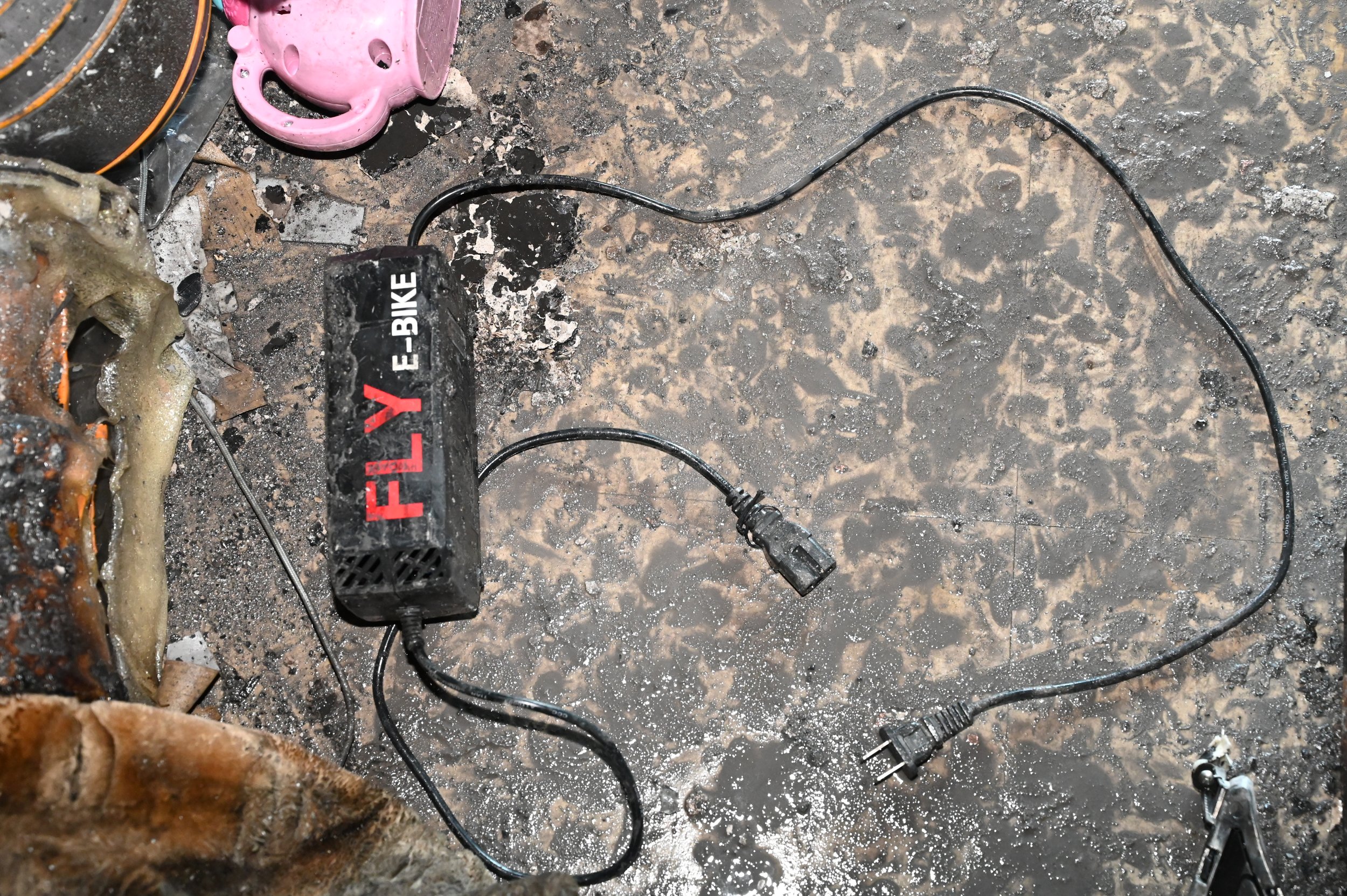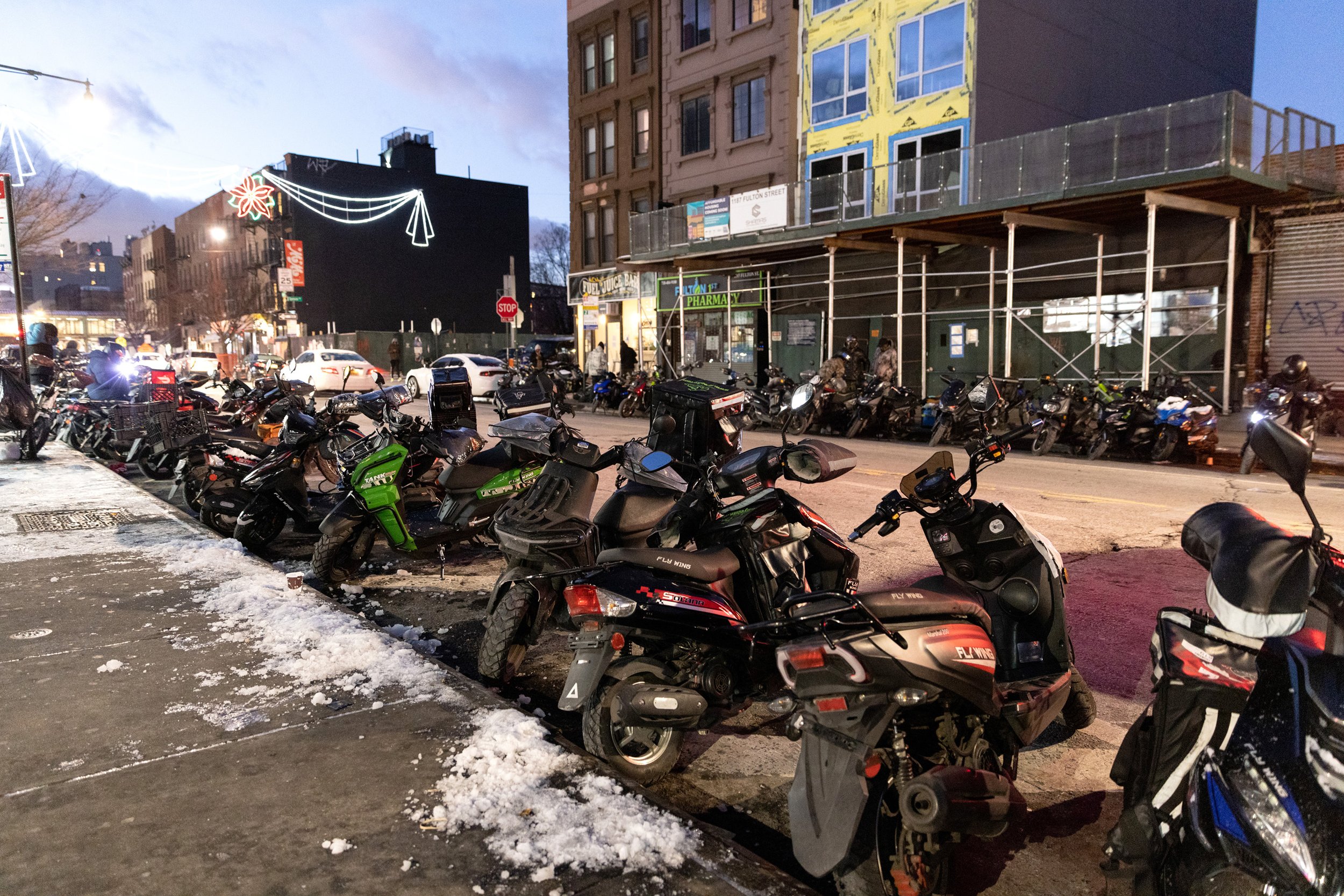
He has helped transform the city's streets
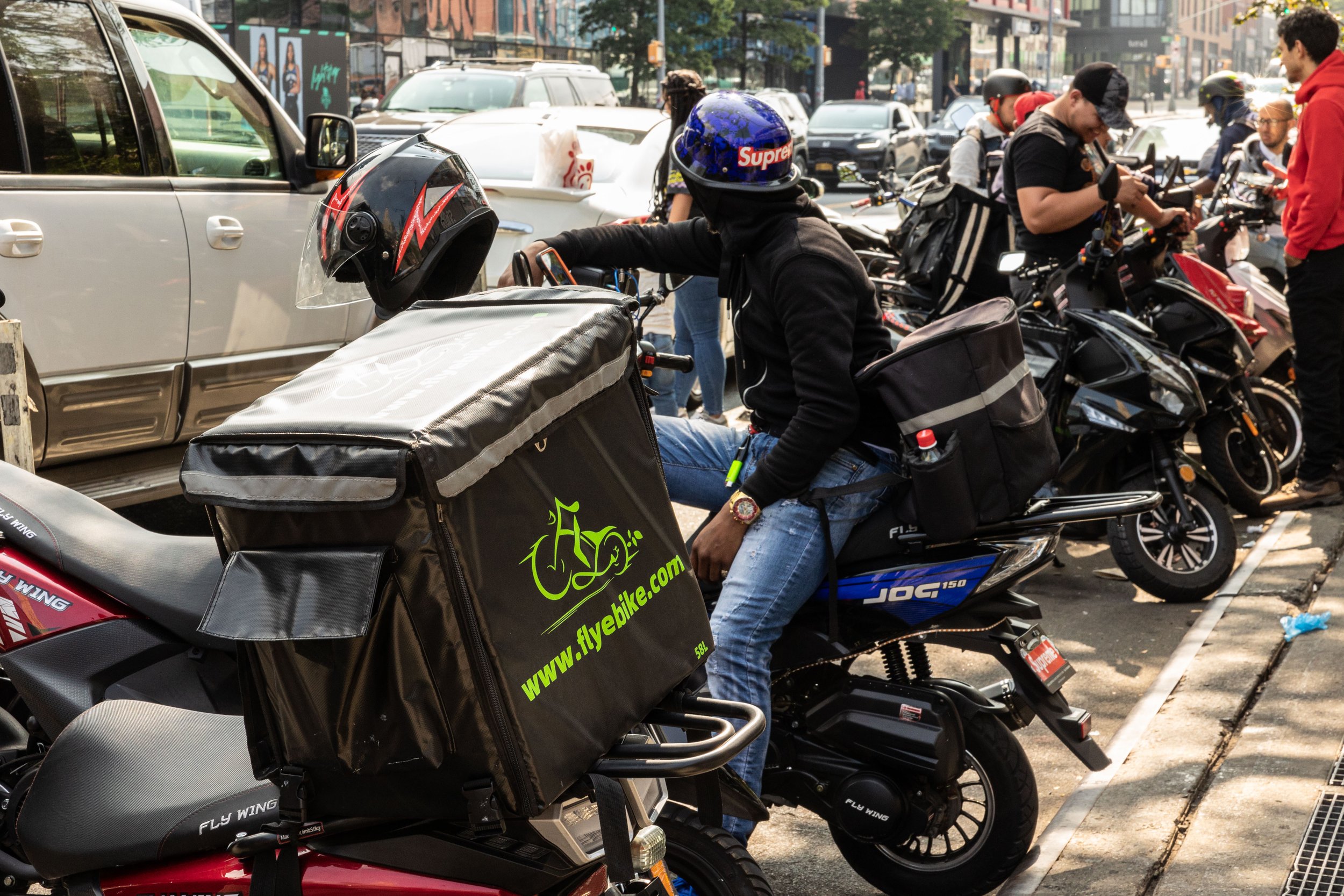
Filling them with fast, low-cost, two-wheeled vehicles
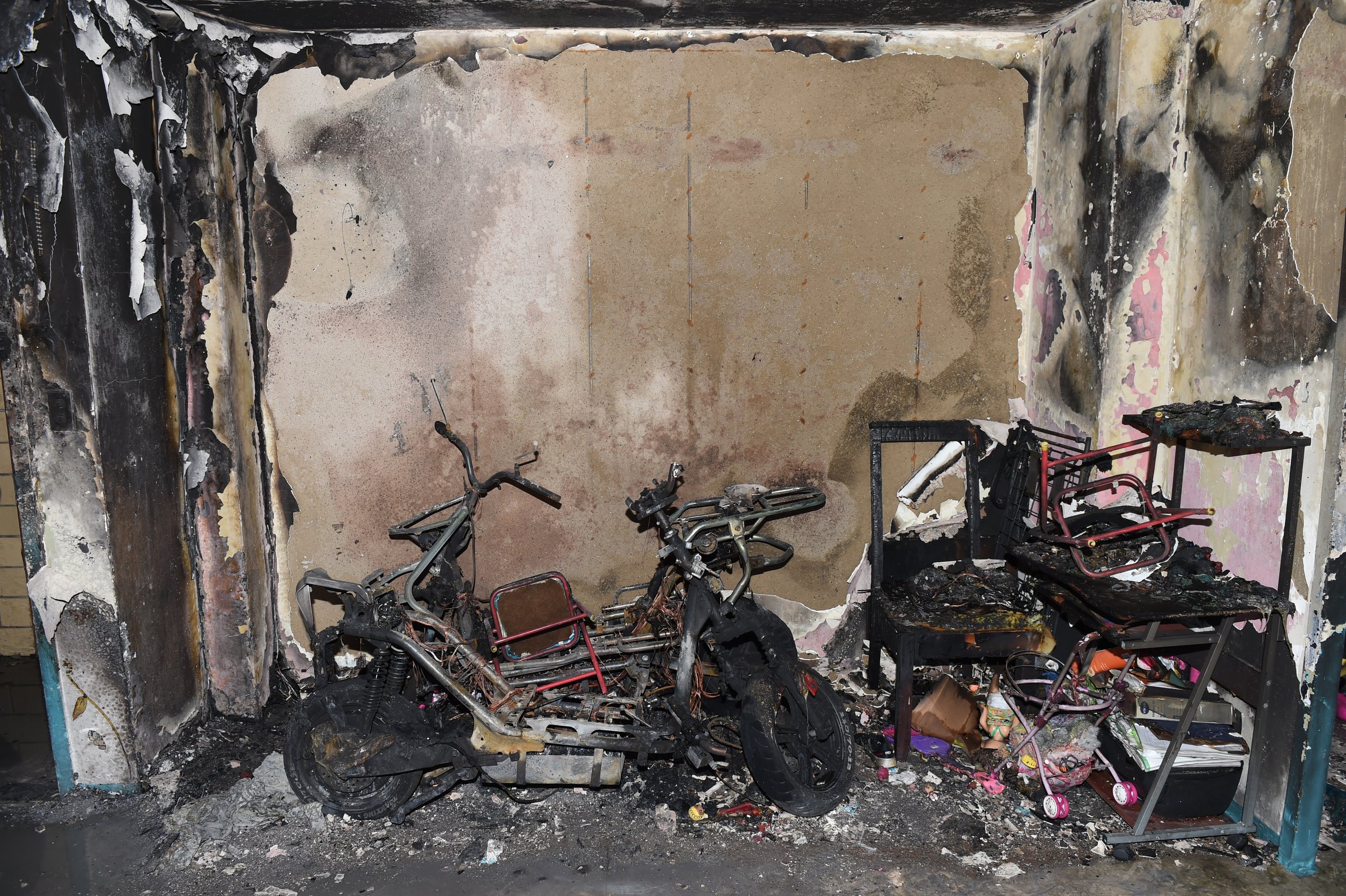
For better and for worse
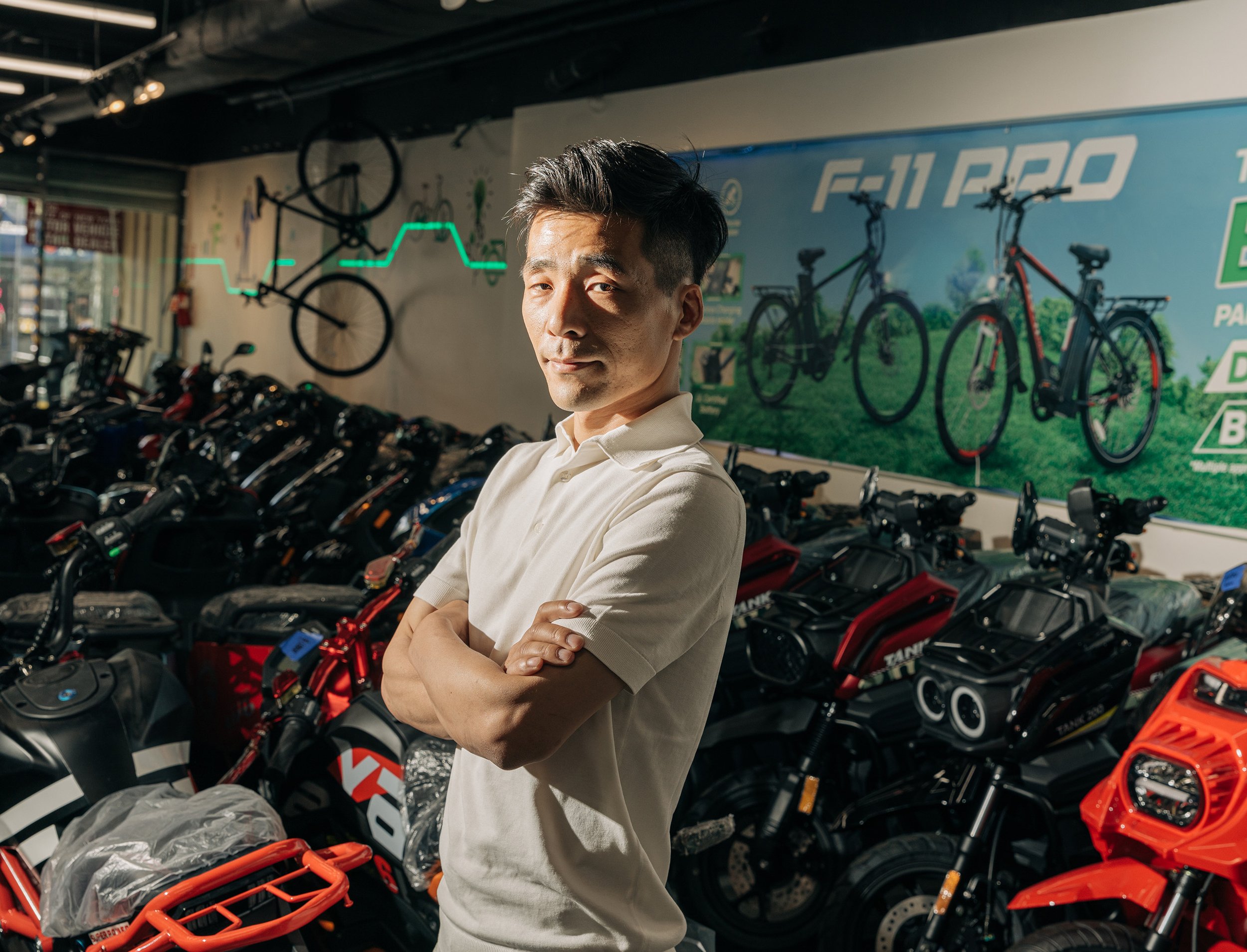
The Moped King
How an Ex-Delivery Worker
Upended the Streets of New York City
THE MOPED KING
How a former delivery worker
upended transportation in New York City

He has helped transform
the city's streets

Filling them with fast, affordable,
two-wheeled vehicles

For better and for worse

The Moped King
How an Ex-Delivery Worker
Upended the Streets
of New York City
Photos: Bess Adler, Josh Katz, New York City Fire Department, Jeenah Moon
January 31, 2025
Co-published with Curbed
On a recent Saturday afternoon in Brooklyn, Mamadou Sow rolled up to the Fly E-Bike shop on Fulton Street with an electric bike in need of repair. Sow, an immigrant from Senegal, had walked into the United States from Mexico nine months earlier and was living in a city-run migrant shelter. He was hoping to work an Uber Eats shift that night. He stood in line behind Matt Lindsey, who was getting his e-bike’s front wheel fixed. Lindsey’s day job is mopping floors in a Lower East Side housing project, but he wanted to pick up weekend work delivering food. Outside, James Johnson looked at gas mopeds on display. He’d had one before, but a driver ran a red light and hit him while he was delivering for DoorDash and wrecked it. (He still completed the delivery.)
Taped to the store window was a New York City Fire Department notice about lithium-ion batteries. It included a photograph of the charred remains of an electric moped whose battery had caught fire and killed someone in the Bronx. The moped pictured happened to be a Fly E-Bike model that was on display in the store. But the threat of battery fires wasn’t keeping customers away. “See how much business they got?” Lindsey said.
There are Fly E-Bike stores all over the city, especially in the outer-borough neighborhoods where the city’s 65,000 delivery workers live — Fly’s target customers. Since the delivery apps don’t provide them with vehicles, they need to get their own — preferably fast and cheap ones. That’s where Fly comes in. One electric moped from the company has an advertised top speed of 40 miles per hour and sells for around $1,000, which is a fraction of the cost of more established brands.
Twenty years ago, e-bikes and mopeds were rare in the city, but now they are everywhere — buzzing around midtown office towers during the lunch rush, parked in long rows outside takeout spots, and, occasionally, barreling down bike lanes and sidewalks. Their proliferation is due in large part to Ou Zhou, Fly E-Bike’s CEO, who told me in an interview in June that he’d sold at least 70,000 e-bikes and mopeds in New York City since 2018. But few New Yorkers have ever heard of him.
Anonymity seems to be just fine for the people behind the other big e-bike and moped brands targeting delivery workers, such as Arrow, Transpro, and Fly Wing (all of whom declined or did not respond to interview requests). While venture-capital-fueled start-ups created the city’s massive delivery-app economy, these unknown e-bike and moped merchants have quietly assembled its sprawling fleet, importing container after container of motorized two-wheelers and parts from Chinese factories and selling them to the city’s small army of delivery workers. But, unlike his competitors, Ou has not been content to stay in the shadows. In June, he took his company public on Nasdaq.
Fly E-Bike CEO Ou Zhou ringing Nasdaq’s closing bell in June 2024. (Photo: Jesse Coburn)
“Today marks a very important moment for Fly E-Bike,” Ou said at an event at Nasdaq headquarters in Times Square that month. Ou, who goes by Andy, wasn’t far from the midtown restaurants for which he used to deliver food on his old electric bike. The 36-year-old immigrant from Fuzhou, China, had worked 11-hour days, six days a week to pay the rent on the Sunset Park room that he shared with three other people. Now, in a crisp gray suit with his hair parted neatly to the side, Ou was about to ring Nasdaq’s closing bell to celebrate Fly’s IPO. “Our vision is price-smart electric-mobility solutions for all,” he said. “Let's do our best in riding to a sustainable future.”
Ou’s buzzy remarks could not have been further from the dire terms that many New Yorkers use to describe the mopeds and e-bikes from Fly and other brands that have become ubiquitous. Politicians and activists regularly inveigh against reckless riding in op-eds and at “moped crisis” town halls. The New York Post runs stories about “migrant moped gangs” menacing innocent New Yorkers. More seriously, the lithium-ion batteries that power many micromobility devices have caused more than 900 fires in the city in recent years, killing more than 30 people and injuring another 500, according to the FDNY. Just a week before Ou’s speech, Mayor Eric Adams ordered bulldozers to run over hundreds of confiscated mopeds for a photo op on Staten Island.
The controversy seemed far from Ou on that June day, but it was inching closer. Lawsuits against Fly were piling up, stemming from claims of battery fires and other product failures that allegedly killed three people and injured 13 others. Behind the scenes, the city was hammering the company with summonses and violation orders for allegedly selling illegal mopeds and batteries and violating city codes. And, in legal depositions, Ou and his deputies would soon make startling admissions about how his business really works.
Mayor Eric Adams ordered bulldozers to run over hundreds of mopeds at a landfill on Staten Island in June 2024. (Photo: Mayoral Photography Office)
How did a delivery worker with a middle-school education and scant business experience build one of the largest micromobility companies in New York City? The surge in demand for food delivery during the pandemic certainly helped, and the patchy regulations around e-bikes and mopeds may have played a role too.
But Ou’s outsize ambition is also part of the story. It’s there in a music video he made not long after arriving in the United States around 2011. “I’ve trekked and risked my life to get to New York City,” he raps in Mandarin. “I’ve spent my youth and sweated a lot to make a little U.S. money.” We see scenes from his new American life: a mall in Chinatown, the streets of Sunset Park, a restaurant kitchen where Ou is butchering meat. Near the end of the video, he stands on a pier under the Brooklyn Bridge, arms outstretched. “I remember what I said before I left my country: ‘I’m going to do something amazing,’” he says. “The only way to succeed is to go to America.”
Ou Zhou appeared in a music video before he founded Fly E-Bike. (Screenshot from the Wayback Machine / YouTube)
Going to America meant retracing the steps of many Fuzhounese immigrants before him. Ou borrowed money, paid a smuggler 300,000 yuan (about $45,000 at the time), then walked into the United States, according to a presentation by Feng Lun, a member of Fly’s board of directors. Ou himself told me he came via Mexico but declined to discuss it further.
Once he arrived, Ou washed dishes, ran a motorcycle-repair business, opened a short-lived ice cream shop in Sunset Park, and delivered food for Chinese-owned restaurants in Manhattan, according to interviews and public records. Outgoing and talkative, he made friends easily, remembered Su Tong, then a pastor at a Fujianese church in Manhattan that Ou attended. “He’s not the type of person who quietly keeps to himself and just does his own thing,” Su said.
It wasn’t long until Ou had the idea for Fly. E-bikes and mopeds were common in Fuzhou, but lots of delivery workers in New York were still schlepping around on regular bikes. So Ou borrowed $12,000 from his friends and roommates, threw in $3,000 he had saved, and founded Fly, he told me. (The company says this was in 2018, although Google Street View archives show one Fly store apparently already operating in 2014.) The name “Fly” reflected his business ethos, Ou has said: “Taking off first and adjusting our course later.”
Ou began importing vehicles from China. These weren’t like the e-bikes favored by tech workers and Park Slope dads, which can come with high-tech gadgetry and cost thousands of dollars, nor were they like the Vespas that some Europhile New Yorkers have long ridden. Fly’s customers are the Deliveristas, whose hourly pay until 2023 averaged around $7. The apps penalized them for being too slow, so they needed rides that were fast, affordable, and equipped to transport food. That is what Ou sold.
The early days were tight. Ou was in debt. A store was robbed. The company kept getting fined — throttle-powered e-bikes weren’t even legal to use in the city until 2020. But, during the COVID-19 pandemic, the company thrived. Jimmy Yeung, a Fuzhounese moped wholesaler in Maspeth, Queens, who’s done business with Ou, attributes Fly’s success to its substantial brick-and-mortar footprint. Whereas other e-bike and moped sellers were mainly content to stock their products in stores owned by others, Ou opened Fly shops all over the city. The brand came to feel omnipresent.
Ou’s strategy worked. Fly’s profits tripled from fiscal year 2022 to 2023, according to the company’s investor prospectus. The business brought in $32 million in net revenue last fiscal year. In June, Fly had 84 employees in its Flushing headquarters and nearly 40 stores, including outposts in Los Angeles, Toronto, and other cities. The company says it produced 19,000 bikes, mopeds, motorcycles, and scooters last year, all electric. As for the IPO, it yielded $9 million. (Ou said he had the idea to go public after watching The Wolf of Wall Street.) By June, he was living on Long Island and driving a Tesla. The guys he borrowed money from became Fly shareholders and, according to the company, “multimillionaires.”
Yeung praised Ou’s success, but he saw risks to the IPO. “He might have moved too quickly and too far,” Yeung said in Mandarin. “I never thought it could really go public, to be honest with you, okay? Because I think if every Tom, Dick, and Harry in our industry, which is relatively low level, can go public, what does that mean? It means all of Wall Street is a scam.”
Fly E-Bike’s headquarters in Flushing, Queens, in September. (Photo: Josh Katz)
Getting a moped from a factory in China to a sales floor in New York City is surprisingly easy. Unlike Europe, the United States does not require a moped (or any motor vehicle) to be tested for compliance with federal safety standards before it can be imported and sold. Instead, compliance operates on a self-certification system; if a manufacturer says its vehicles are safe, it can import and sell them. “Nobody’s checking,” said Mike Hillman, who’s imported and sold hundreds of thousands of Chinese-made mopeds in the United States. “It's basically an honor system.”
The National Highway Traffic Safety Administration does inspect some vehicles already on the market. But those tests only numbered around 120 in the past year, a small percentage of all vehicle models. Ou told me that Fly complies with all regulations, and the company has made similar promises to customers, investors, and federal and state regulators. But NHTSA had never tested a Fly vehicle. So I decided I would.
I bought a Fly-9 moped in June and shipped it to an office park outside Detroit where Applus+ IDIADA tests vehicles for governments and manufacturers. Affixed to the bottom of the moped was a metal plate that read: “This vehicle conforms to all applicable U.S. Federal Motor Vehicle Safety Standards.” There are nine such standards for mopeds; IDIADA tested for compliance with five of them. The Fly-9 failed to meet any of those standards, according to IDIADA. (Fly did not respond to requests for comment on this or any of this article’s other findings.)
A Fly-9 e-moped bears a plate saying it complies with the Federal Motor Vehicle Safety Standards. Vehicle testers found otherwise. (Photos: Applus+ IDIADA)
A Fly-9 e-moped bears a plate saying it complies with the Federal Motor Vehicle Safety Standards. Vehicle testers found otherwise. (photos: Applus+ IDIADA)
As for the lithium-ion batteries that power many e-bikes and mopeds, the federal government has no binding regulations aimed at preventing them from catching fire. New York City and State have sought to make up for this lack of federal oversight by passing laws to ensure e-bike and e-moped batteries sold locally are certified to be safe. City data shows that Fly has allegedly run afoul of such requirements too. The company or its subsidiaries have received 64 summonses for allegedly selling uncertified batteries or micromobility devices and another 22 summonses for allegedly selling illegal mopeds, according to Department of Consumer and Worker Protection data. (None of those charges have been dismissed, according to the department.) City investigators also claimed 116 alleged violations of the fire code and possibly other city codes at Fly locations in 2023. (The FDNY did not respond to a question about how many of those violations were later dismissed or resolved.)
I also bought an e-bike from Fly to see whether its battery complied with city law. It didn’t have the requisite certification label, so I sent photos of it to the DCWP. Based on the appearance of the battery, the bike packaging, and the accompanying documentation, a department spokesperson said the battery “seems” to violate city law. (Fly did not respond to a question about how many of its e-bikes and e-mopeds come with compliant batteries, although by December it was advertising four e-bike models as certified.)
Hillman and Matt Brueggeman — the CEO of Flux Mopeds, who also has experience importing vehicles from China — said that, in general, many Chinese mopeds in the United States are mass-produced with cheap components and scant engineering. Some are made for the domestic market in China and therefore don’t need to comply with U.S. requirements, Brueggeman added. And it’s easy to find ready-made mopeds for sale on the Chinese wholesale web, where manufacturers offer them for $400 apiece and advertise shipping to the United States. Quality varies. “They’re not reliable,” Yeung, the wholesaler, said generally about the e-bikes and mopeds that have proliferated in the city. “I can say it’s garbage.”
The battery on a Fly e-moped allegedly caused a fatal fire in the Bronx in 2021. (Photo: FDNY)
Those issues were probably unknown to Christopher Valentin when he bought an electric moped from Fly to deliver food for Uber Eats and DoorDash. In January 2021, it blew up in his sister’s apartment in the Bronx and killed him, according to his family and a lawsuit filing. The 37-year-old delivery worker had brought the moped into the apartment’s living room to charge overnight. But his family says it wasn’t even plugged in when flames suddenly shot out of it the next morning. “It wasn’t like a regular fire,” his sister, Jasmine Rivera, told me. “It looked like rocket fuel, like if a jet was about to take off.”
Rivera said she and her two young children were trapped — the flames blocked every escape route. So Valentin stepped into the fire to help them. “He made himself a wall so me and my son could pass,” Rivera said. She watched the fire engulf her brother. They made it to the bedrooms, where they screamed out the windows before passing out. They woke up in the hospital.
Rivera’s husband, Victor Fernandez, said he was burned on almost 40 percent of his body. He needed two skin grafts, the second with donor skin. His back looks topographical — the flesh is bunched up in dark ridges and, elsewhere, stretched out in flat, pink expanses. It feels too tight, and he can’t sweat through it.
When I met Rivera, she had a colostomy bag taped to her torso — the result of an intestinal infection caused by the fire, she said. Her voice now sounds gravelly due to a hole that doctors cut into her throat after the fire to help her breathe. She used to like singing — she and Valentin often made music together — but she doesn’t sing much anymore. “Not that I wanted to be professional about it, but it brought me comfort, it brought my kids comfort,” she said. “Now it just makes me sad.”
Valentin survived for a week before his wife, Izabelle Gonzalez, decided to take him off life support. “Every day a different organ died,” she said, crying. “You could already smell his rotting flesh in his room. And I couldn't keep telling my boys that their father was slowly dying.”
Top: A battery fire allegedly involving a Fly e-moped left Victor Fernandez with burns on nearly 40 percent of his body. Bottom: The fire also injured Jasmine Rivera (right) and killed Christopher Valentin (in photograph). Valentin is survived by his wife, Izabelle Gonzalez (center). (Photos: Jesse Coburn)
The family sued Fly, claiming the company’s negligence caused Valentin’s death and the others’ injuries. Fly has denied the allegation; the litigation is ongoing. Fly was still selling the same model that allegedly killed Valentin — the Fly-10 — this past summer, including at the Fly E-Bike store that the family says sold it to Valentin. Through a public-records request, I received FDNY photographs of another fatal fire in 2023 that appears to have been sparked by the battery on another Fly-10. (Fly did not respond to requests for comment on either fire.)
In our interview in June, Ou acknowledged that battery fires were a problem but blamed them on bad actors elsewhere in the industry. “Although our products comply with all laws and regulations, there are still some issues that have resulted from others in the industry who failed to maintain quality control over their products,” he said.
The Valentin case is one of eight lawsuits that Fly and its subsidiaries were facing by this past summer. (One of those cases settled in October.) Another, filed in Texas, forced company executives to start answering questions about Fly safety standards — or to try to, at least. Feng Rui, a former restaurant owner who is now Fly’s chief operating officer, said in a deposition in July that he did not know whether the company had departments dedicated to product safety or safety compliance, or whether Fly had a process for tracking injuries caused by its products. He could not answer questions about quality-control inspections of Fly merchandise, except to say they are handled by manufacturers in China.
The Texas suit has also complicated Fly’s statements to investors that its work includes “designing” vehicles. In fact, Feng said Fly is largely “not involved” in the design of its products, except for one new e-bike model and the selection of certain components. The vehicles are “common models” that are already “90 percent” assembled when Fly imports them from China, he said. In another deposition, E Junchao, Fly’s technology support manager, described Fly’s typical design and assembly work as follows: “All we have to do is put on the front wheels, as well as the handlebar.” (Ou told me in June that Fly originally imported ready-made vehicles but is now “heavily involved in the design process” of some models and has made “significant adjustments” to others.)
The depositions astonished Cesar Tavares, the attorney for the plaintiff (who says the handlebars on her Fly e-motorcycle locked into place while she was driving and threw her to the ground). “It seemed like he didn't have any real experience with any of this stuff,” Tavares said, referring to Feng. “It seems like none of them really did.” But, he added, “it kind of makes sense. Six years ago, they didn't exist. And they did three times as much business every year until now, and they've got all this product out there. From what we’ve been able to see, they have, like, no real infrastructure to be managing what is essentially a vehicle company by a bunch of people that were just a few years ago working at restaurants.”
Ou was also deposed in the suit. Amid extensive questioning about Fly’s quality-control standards, he said that Fly’s products comply with U.S. laws and regulations, but that he’d hired others to mind such issues, and that it wasn’t on him to always remember the particulars. “When [Elon] Musk makes rockets, he himself does not need to read all the details about how a rocket would be made,” Ou said. Later he added, “Since the government allows us to sell these products, I think the products are safe for us to sell to our clients.”
A Fly-branded charger found at the scene of a fatal lithium-ion battery fire in Manhattan in 2022. (Photo: FDNY)
But it isn’t the lawsuits that present the biggest challenge to Fly. The company’s stock price tanked one month after the IPO and has stayed low since. Nasdaq is threatening to delist Fly if its share value doesn’t recover. The company lost $1.1 million in a recent quarter, down from a $750,000 quarterly gain the year prior.
The stock-price drop came as little surprise to Yeung, the Maspeth wholesaler, who speculated it was the result of declining demand for electric bikes and mopeds. “Electric bikes is dead,” he said, drawing a finger across his neck. It’s true that Deliveristas have been shifting to gas mopeds for a while, and the reasons make sense: Low-end gas mopeds are generally cheaper than e-bikes, filling a tank is faster than charging a battery, and the vehicles aren’t likely to blow up in your home and kill your loved ones. The development appears problematic for Fly. The business is built on the bet that two-wheeled battery-powered vehicles are a big part of the future of urban transportation. What happens if customers see it differently?
Moped wholesaler Jimmy Yeung at his Maspeth warehouse in February 2024. (Photo: Jesse Coburn)
Fly’s response to these industry shifts seems to be to hedge its bets. The company was selling gas mopeds at nearly all of its stores in the city this past summer, according to store workers. A former Fly employee told me gas mopeds constituted about one-third of the company’s sales. (Fly did not respond to a request for comment on its gas-moped sales.)
This side of the business might surprise anyone who heard Ou’s pitch at Nasdaq about “riding to a sustainable future” or who chose to buy shares based on Fly’s investor prospectus, which didn’t mention the gas-moped sales. But Fly is evolving. Around August, it launched a new rental service for e-bikes. The company is teasing new models on its website and wrote in a business filing that it plans to expand to Europe and South America. An online side business selling “gas bikes” is also in the works, per the filing.
The laissez-faire era of the city’s e-bike and moped boom might also be winding down. New state laws have kicked in, one requiring safer e-moped batteries, another obligating stores to register mopeds they’ve just sold — much like a dealership would a car — which should reduce the number of mopeds driven illegally without license plates. The city is piloting a battery-swap system, has tightened regulations on retailers, and recently launched an e-bike trade-in program (in which Fly is participating). And the U.S. Consumer Product Safety Commission is developing mandatory safety standards for micromobility batteries to fill the void in federal regulations on the issue.
Seized mopeds in a New York City Police Department auto pound in Brooklyn. (Photo: Jeenah Moon)
What all of this means for Ou and the city’s other e-bike and moped tycoons remains to be seen. But the industry they serve isn’t going anywhere. Delivery orders in the city still top 350,000 a day, the apps still expect breakneck service, and delivery workers still need the cheapest, fastest vehicles to make the whole thing work. So long as the apps fail to provide workers with those vehicles, somebody else will. There are upsides to doing that business quietly.
“If you follow the law, you’re not gonna make money, you’re not gonna survive,” said Yeung, the moped wholesaler. “Behind the law, you’re making money.”
Reporting contributed by Fan Chen, Yi Liu, Jackie Zamora, Ibrahim Hersi, and Michael Kaess.



